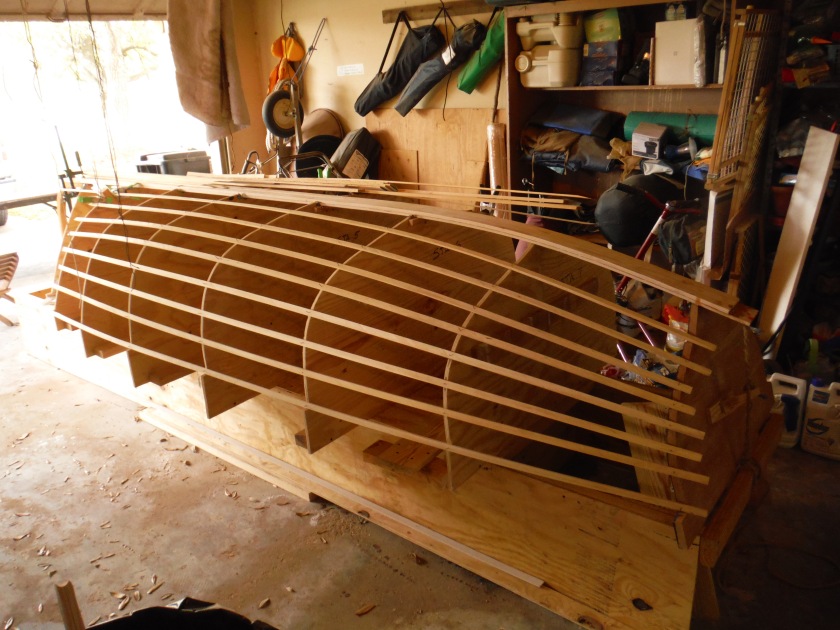Over the centuries, boatbuilders have developed their own vocabulary. I suspect they did this on purpose so they could confuse the heck out of cabinet makers.
Tammie Norrie is built using glued lapstrake construction. Lapstrake construction is an ancient method, dating back to at least the time of the Vikings. These boats go back to the 9th century. Wikipedia states that there is a preserved lapstrake boat that dates to 320 A.D. (if it’s on the interweb, it must be true). In lapstrake construction, the planks (strakes) lap over each other, hence the name. Think of shingles on a roof. Glued lapstrake construction is a modern adaption of this technique, using marine grade plywood, glued together with epoxy. It’s simpler and requires a lower level of craftsmanship than traditional lapstrake construction, which allows someone like me to build a boat that’s prettier than a barge.
Lining off is the process of determining the number and position of each of the strakes. None of the strakes are exactly the same, but they need to follow a smooth flowing curve and look proportional to each other. Lining off a boat from scratch takes a good eye.
In this case, I had a lot of help. The paper plans show the location of each of the plank laps on each of the mold patterns. I transferred these marks to the molds and would use those as a starting point. Long battens would connect the marks on each of the molds, and the marks would be tweaked as necessary to assure that the curve of the batten was smooth and flowing. Lining off also allowed me to verify the accuracy of the molds. If a mold was off, it would show up when I laid the battens in place.

As it turned out, the marks were very close, and only needed slight adjustment. The molds also turned out to be surprisingly accurate, with the exception of the first one. It was definitely a little narrow. Perhaps if I had done a full lofting rather than just layout the molds from the table of offsets, I would have caught this. But because it was only the one mold, I’m leaving it as is. I’m trusting that the planks will follow a fair line. I double-checked the lines plan that the designer provided, the lower waterlines do show a hollow near Station 1, but I’m going to let the plywood follow the course it wants to.